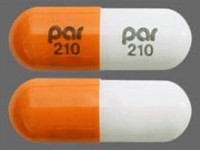Acenocoumarol
CLINICAL USE
Anticoagulant
DOSE IN NORMAL RENAL FUNCTION
4–12 mg on 1st day; 4–8 mg on 2nd dayMaintenance dose usually 1–8 mg daily according to INR
PHARMACOKINETICS
DOSE IN RENAL IMPAIRMENT
GFR (mL/MIN)
DOSE IN PATIENTS UNDERGOING RENAL REPLACEMENT THERAPIES
IMPORTANT DRUG INTERACTIONS
Potentially hazardous interactions with other drugs
ADMINISTRATION
Reconstition
–
Route
Oral
Rate of Administration
–
Comments
–
OTHER INFORMATION
Acenocoumarol prolongs the thromboplastin time within approximately 36–72 hoursDecreased protein binding in uraemia
